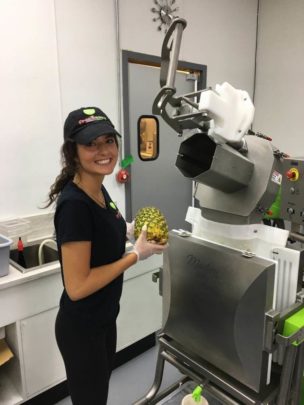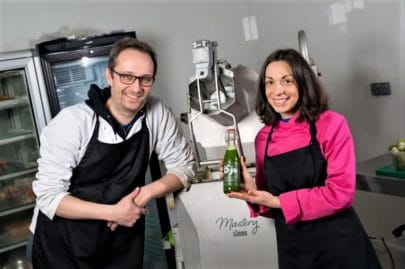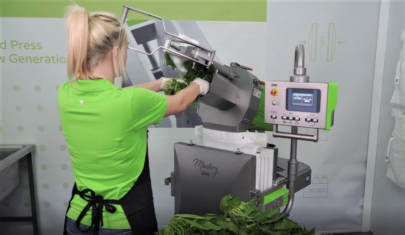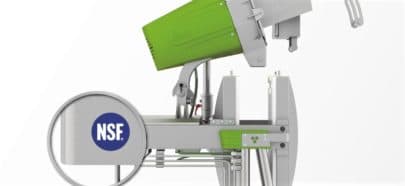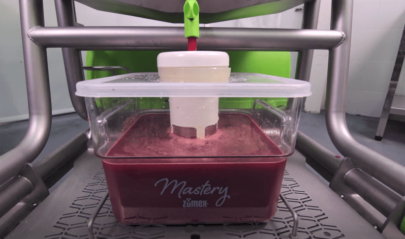
How the Mastery Cold Press juice machine works, step by step
An important part of the success of your new Cold-Pressed juices business is the proper design of the production process to make it as efficient as possible. To do this, it is recommended to clearly understand the different stages, as well as appropriate handling for the Mastery Cold Press juice machine, which we explain below:
Operational process with Mastery Cold Press juice machine
-
Pre-crushing stages
It is recommended to store the fruit in refrigerated and clean place. One must wash and disinfect it before the pressing process as we are dealing with a product that will often undergo no further treatment.
1. Wash, disinfect and rinse the fruit and vegetables. The leafy vegetables must be carefully washed in the areas between the stems.
2. Prepare the fruit:
a) Fruits such as apples, pears, cucumbers, ginger, etc do not need to be peeled.
b) Carrot and beetroot: Remove the green coloured stem area. To have a bright orange colour it is recommended to scrape the carrots, although this is not necessary if they are part of a recipe with several components.
c) Pineapple: Remove leaves and the bottom part. It is unnecessary to peel it. The skin does virtually not affect the flavour of the pineapple juice although it does slightly affect the colour.
d) Watermelon and melon: It is necessary to peel the watermelon. With the melon, depending on its type and the desired result, it may or may not be necessary. In both cases, as it involves large fruits, they will have to be divided into smaller pieces
e) Green leafy vegetables: The green leaves hide soil, small insects, etc between the leaves, so in addition to disinfecting them, they will require a more careful rinse. The very long vegetables will have to be cut into several parts in order to perform the described cleaning process and adapt it to the length of the Mastery’s hopper.
f) Citric fruits: For orange, it is essential to remove the peel. We recommend the use of one of our automatic citrus fruit squeezers. If a lemon is to be used in any part of the recipe, we can leave the peel on. If you wish to obtain lemon juice, as with orange, remove the peel or use one of the specific machines.
-
Crushing and pressing with the Mastery Cold Cress juicer
1. Crushing process: Adapt the crusher speed to the type of product. Higher speeds for hard fruit and lower speeds for soft fruit with a high juice content. Similarly, you should select the appropriate disc:
– ½” for soft fruit (watermelon, melon, cucumber, pineapple…) and/or hight-fiber fruits as ginger.
– 1/4” for intermediate fruit such as apple, pear, green leafy and the mixture of products where we shall mix all kinds of frit during the shredding phase. This is the most versatile disc!
– 3/16” for harder fruit such as ginger, carrot, beetroot. This disc is optional (it is sold as an optional accessory)
– 3/32” for hard fruit such as carrot and beetroot we shall obtain a greater yield during the pressing phase.
– ½” for hight-fiber fruits as ginger or pineapple we shall obtain high working efficiency.
There are different alternatives on how to process the foodstuffs. Although the quickest is usually to enter the juice ingredients all at once, ultimately it is more efficient in the end to process each foodstuff on its own. In future publications se shall discuss the best strategies for ensuring the previously mentioned 3 key factors: cost, time and quality.
We shall fill the hopper with the product to be shredded and on inserting the pusher, the shredding phase will start. The high torque brushless motor, the lever system and pushing plate, will optimise the shredding that will be collected in the pulp box and will fall into the filtering bag set on the press. With hard product, non-excessive filling of the hopper and soft pushing will facilitate the shredding.
2. Storage. The shredded foodstuffs will fall into the bag. The ipos bag has markings on the side that indicates their maximum filling height, and also identifies each one of the different types of fruit. Once we have reached the mark, stop the shredder, position the head to a higher position for better operation and position the bag in the pressing position. Then, release the bag from the header and fold back the top flap. Remember to bend the tab only. The upper part of the bag should remain free so that during pressing, the pulp fills the entire surface of the pressing plate, preventing an overload and breakages in the bag.
3. Pressing phase start. Mastery has a real-time speed control so that we can adapt the speed to the pressing conditions at all times. For fruit with a high content of juice and pulp, we shall use low speeds of 20-35% in the final pressing phase so that the extraction is done smoothly, the juice is filtered, and an overload is avoided causing breakages in the bags and splashes. For fruit with a lower juice content se can use higher speeds (40-50%) in this final phase. We recommend using 70-100% of the speed until we start to press the bag and the juice starts to fall into the tray. At this time, we must turn down the speed as previously explained.

4. Second Pressing. After a first pressing, we recommend opening the bag, stirring the contents of the bag (using the spatula) and press once again. In this case, increase press speed up to 100% to obtain an extra percentage of juice, improving the final yield of extraction.
It may interest you: Types of Cold Press juice companies
5. Gathering. The juice will drop into the collection tray and fill the receiving tank. An additional filter is installed in it that prevents large fruit or undesirable particles from falling into the juice.
-
Mixing and conservation stage
1. In the case of obtaining the juices one at a time, mix the juices of the different vegetables and fruits in a larger tank to prepare the end recipe. (If all the ingredients have been pressed together, this step will be unnecessary).
2. We shall proceed to fill the bottles as soon as possible and subsequently store them at a low temperature below 4ºC. If your juices are to be consumed in the next 3 days, with this step they will be ready for sale!
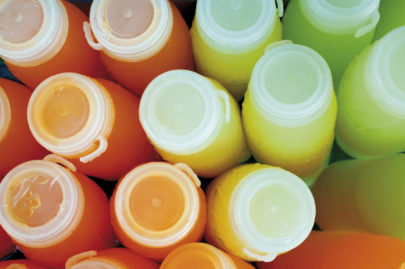
3. If on the other hand, you want that the juices have a longer selling date, there is the possibility of additional processing, such as that at high pressure, for example (High Pressure Processing). This is a process in which the packaged juices are submitted to a high (cold) hydrostatic pressure, which will prolong their shelf life.
Do you want to offer your customers the best juices? Zumex Cold Cress juice machine is what you need?
